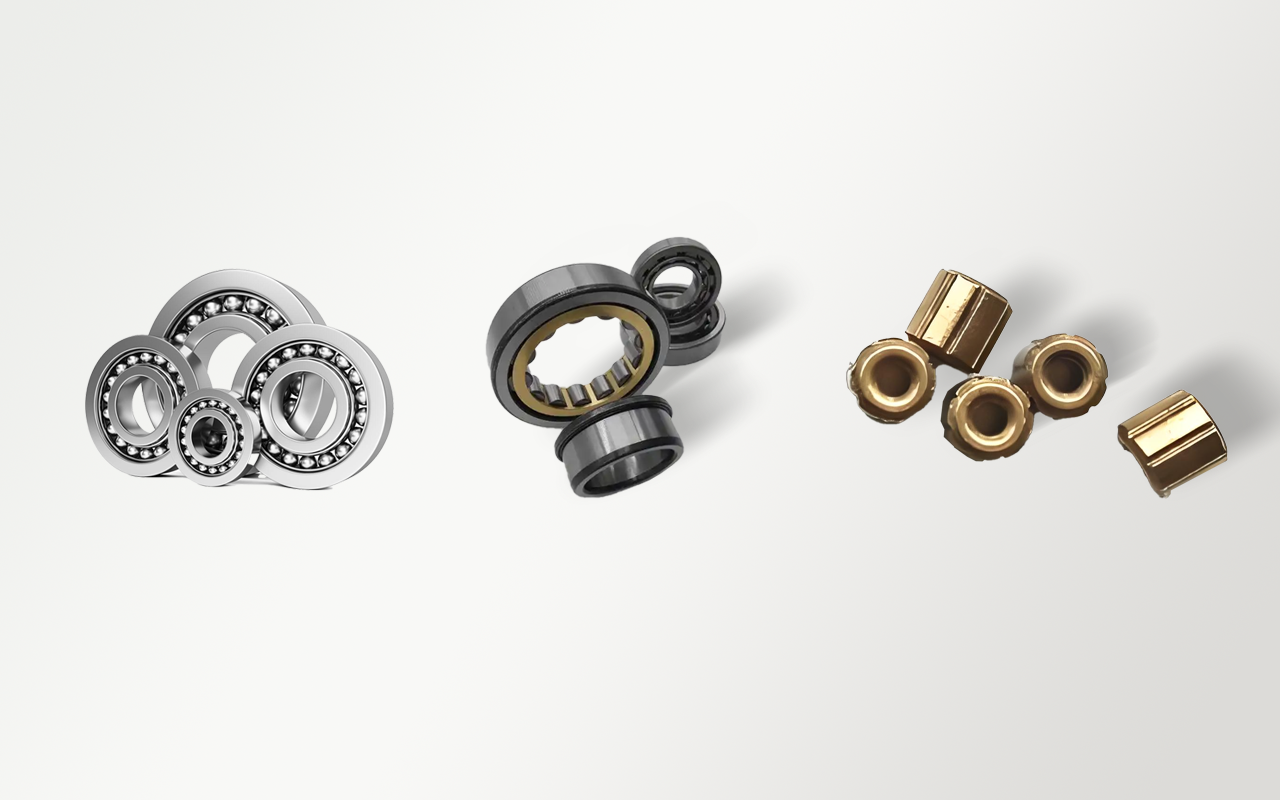In the design and selection of cooling fans, the choice of bearing type plays a significant role in determining the fan's performance, noise levels, lifespan, and cost. Understanding the characteristics and applications of different bearing types helps in making the best choice based on specific needs. This article delves into the advantages and disadvantages of ball bearings, hydraulic bearings, and oil-lubricated bearings, assisting you in making a more professional and precise selection.

1. Oil-Lubricated Bearings
Also known as oil-impregnated bearings, these bearings use lubrication oil to reduce friction and are typically employed in low to medium-speed fan systems. Their simple structure and low cost make them an ideal choice for entry-level or budget-sensitive projects.
1.1 Advantages:
- Low Cost: The simple structure reduces production costs, making them suitable for budget-conscious applications.
- Good for Low to Medium Speeds: Oil-lubricated bearings perform well at low speeds due to the friction-reducing properties of lubrication.
1.2 Disadvantages:
- Shorter Lifespan: Over time, the lubrication oil evaporates or leaks, leading to increased friction and wear, which shortens the bearing's lifespan.
- Increasing Noise: As the lubrication oil degrades, friction increases, resulting in higher noise levels.
- Temperature Sensitivity: Oil lubrication is prone to evaporation or degradation at high temperatures, reducing bearing performance.
2. Hydraulic Bearings
Hydraulic bearings are an improvement on oil-lubricated bearings, featuring a closed-loop oil-locking structure to enhance sealing and durability. They are suitable for more demanding applications requiring higher performance.
2.1 Advantages:
- Low Noise: The oil-locking structure minimizes oil leakage and reduces friction, maintaining low noise levels over long periods.
- Longer Lifespan: The enhanced sealing and structure improvements lead to a longer lifespan compared to oil-lubricated bearings.
- Improved Mechanical Performance: Hydraulic bearings handle higher loads and temperatures better than oil-lubricated bearings.
2.2 Disadvantages:
- Performance in Extreme Conditions: While better than oil-lubricated bearings, hydraulic bearings may still underperform in extremely high temperatures or under excessive loads.
- Higher Cost: Due to improved sealing and structural design, hydraulic bearings are more expensive than oil-lubricated bearings.
3. Ball Bearings
Ball bearings utilize rolling friction, containing steel balls that rotate around the shaft to minimize friction losses. Known for their excellent mechanical performance and long lifespan, ball bearings are commonly used in high-speed and high-load applications.
3.1 Advantages:
- Low Friction: Ball bearings minimize friction, reducing energy consumption and extending the fan's lifespan.
- High Temperature Resistance: Ball bearings operate effectively at higher temperatures, making them ideal for high-load applications requiring long-duration operation.
- Long Lifespan: Compared to oil-lubricated and hydraulic bearings, ball bearings generally offer superior durability, especially at high speeds.
- Good Sealing: The enclosed design effectively prevents dust and contaminants from entering, preserving the internal components.
3.2 Disadvantages:
- Higher Cost: The manufacturing cost of ball bearings is relatively high, especially when high precision and temperature resistance are required.
- Slightly Higher Noise: While ball bearings reduce friction, they may generate more noise at high speeds, especially in lower-quality variants.
4. How to Choose the Right Bearing Based on Application
Bearing selection should balance performance and cost, ensuring long-term stability and optimal cooling for your fans.
- High-Speed, High-Load Applications: For devices requiring high speeds and long-duration operation under heavy loads, ball bearings are recommended. Although more expensive, their low friction, high-temperature resistance, and long lifespan make them ideal for high-performance environments.
- Medium to Low-Speed Applications: Hydraulic and oil-lubricated bearings are excellent choices for medium to low-speed fans. While oil-lubricated bearings are cheaper, they have a shorter lifespan. Hydraulic bearings provide a better balance of noise and durability for moderate loads.
- Budget-Conscious Options: If the device has limited budget and moderate performance requirements, hydraulic bearings offer the best value. They provide a good balance of noise reduction, extended lifespan, and efficient cooling at low to medium loads.
5. Advantages of Ruiapple Electric Bearings
Ruiapple Electric's cooling fans use high-quality ball bearings, hydraulic bearings, and oil-lubricated bearings to ensure optimal performance across various applications. Our fans are built with high-strength PBT material for the fan frame and blades, ensuring stability and long lifespan in high-temperature environments. Additionally, our fans support waterproof, oil-resistant, and anti-corrosion treatments to meet the demands of extreme conditions, enhancing the reliability and longevity of the product.
By understanding the characteristics and applications of these three bearing types, you can more precisely choose the best fan solution for your equipment. With Ruiapple Electric, you not only gain high-performance, reliable cooling fans but also benefit from the support and expertise of our professional team.






